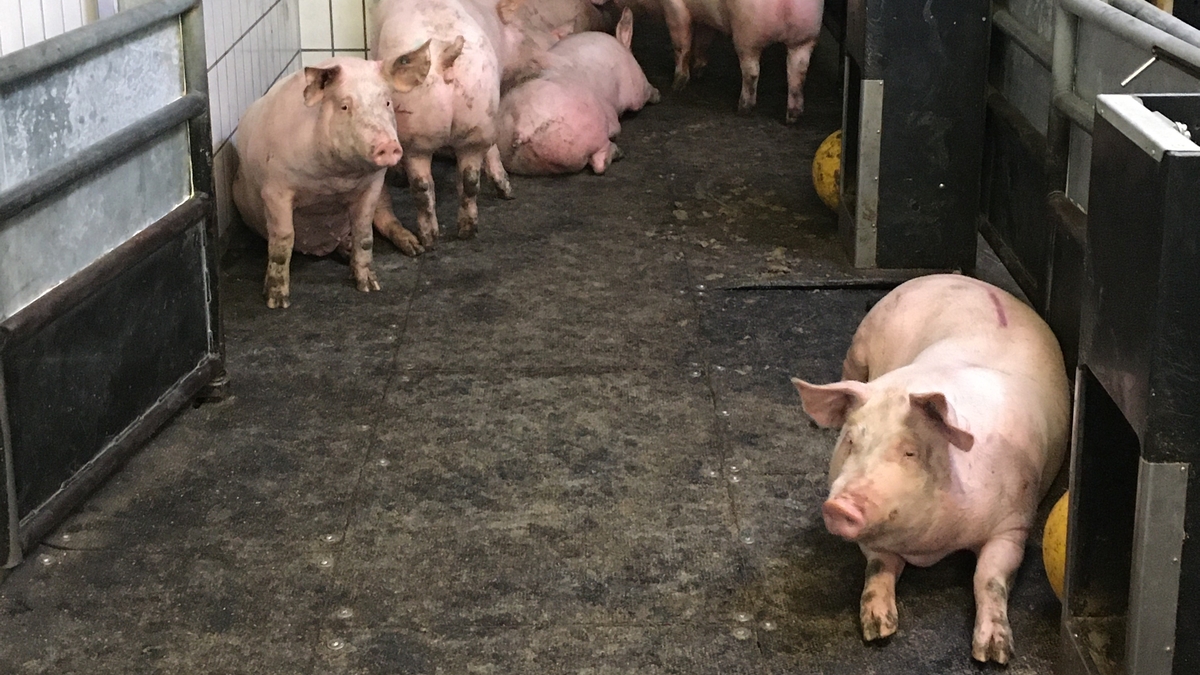Welfare inspections at arrival and in lairage at pig slaughterhouses

Subject
Welfare inspections, slaughterhouses
Three key areas
The review first presents the relevance of the three key areas for the welfare of pigs:
- Arrival: On arrival, pigs shall be unloaded as quickly as possible from the truck.
- Handling and moving in lairage: Pigs should be handled gently, respecting their biological behaviour and reducing stress as much as possible. The layout and construction of corridors and lairage area should encourage pigs to move freely and minimal coercion to the stunning area. The size of groups being moved, ramps for unloading, the layout of lairage, lighting management, surfaces of floors, the level of noise and airflows and handling of animals are significant for the ease of movement of the animals.
- Comfort around resting: The majority of pigs are housed in lairage pens before being moved to the slaughter line. To minimise potential aversive behaviour in the pens, the following elements need to be taken into account: climate in lairage, supply of water and food, maintaining familiar pigs in groups and ensuring adequate space. It is essential for inspectors and business operators to understand the behaviour and emotional conditions of pigs in order to recognise ‘normal coping behaviour’ or behaviour that indicates the prevalence of animal welfare problems.
Indicators, legal framework and improvement measures
For each of the key areas, animal welfare indicators are described to help inspectors and business operators to identify and monitor animal welfare problems, and support the evaluation of compliance with the legal framework of Council Regulation (EU) 1099/2009. Examples of such animal-based welfare indicators are falling, slipping and turning back. Following a description of the legal requirements for lairage in slaughterhouses, the review concludes with practises and guidelines that can improve pig welfare at the slaughterhouse during arrival, handling and resting in lairage.
Official inspectors and experts from member states are invited to contact EURCAW-Pigs info.pigs@eurcaw.eu with any suggestions, comments or questions to further improve this review.
